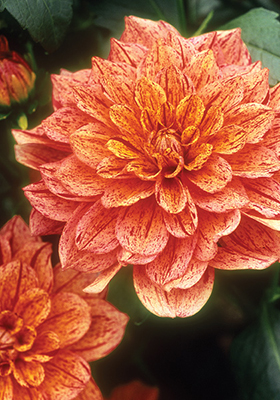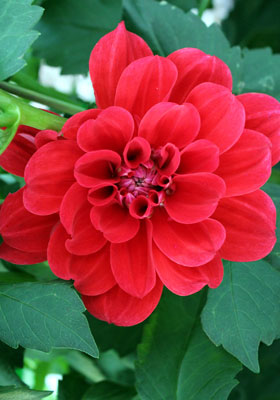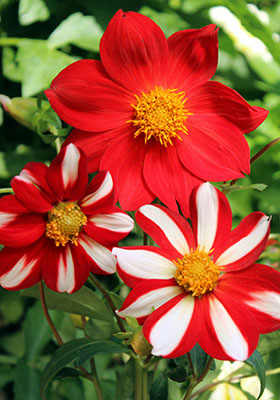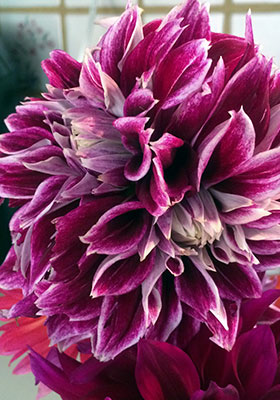Wacky Dahlias: Why Did My ‘Nonette’ Bloom Red?
Dahlias are incredibly diverse, and most of the time that’s a good thing — but not always. Unlike most living things which have two sets of chromosomes, dahlias are octoploids which means they have eight. This wider range of genetic possibilities is the source of their astonishing diversity, but it also creates more opportunities for things to go awry.
Chimeras — named for a mythological beast that was part lion, goat, and snake — are plants in which cells of two different genetic make-ups exist side by side. Many bi-tone, speckled, and other variegated dahlias are chimeras, and the interaction between their genetically different sections or layers is often unstable. ‘Nonette’, for example, is usually an apricot colored dahlia sprinkled with tiny bits of red. Sometimes, though, its flowers are all apricot or all red, as you can see below. Most of the time most flowers of a chimera are normal with only a random few that are different, but sometimes the plant changes completely so that all of its flowers are different, and sometimes only one part of a flower goes wacky, as in the ‘Little Beeswings’ pictured below.
Growing conditions can make a difference, too. Flower colors often change as the weather cools and sunlight diminishes in the fall, and stressful conditions — too much heat or not enough water, sunlight, or nutrients — can sometimes make double flowers bloom with fewer petals.
Most of these changes are only temporary (and often entertaining), but if you have a dahlia that bloomed all wrong this year, please let us know so we can send you a refund, credit, or replacement. And if you have a photo of one of our dahlias that’s gone wacky in your own garden, we’d love to see it!

normal ‘Nonette’
|

wacky ‘Nonette’ in our trial garden
|

‘Little Beeswings’ (sectorial chimera)
|

‘Union Jack’ (all on one plant)
|

two-headed ‘Sellwood Glory’
|

‘Deuil du Roi Albert’ with too few petals
|












